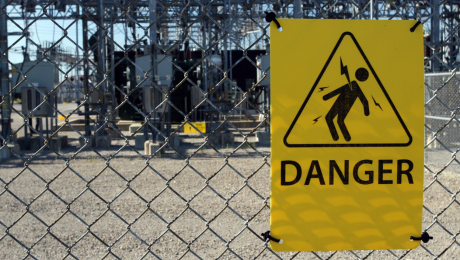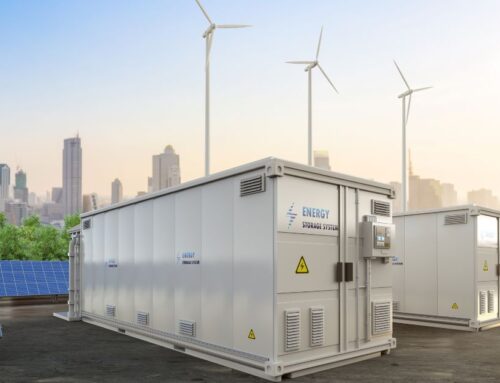
The Electrical Safety and Other Legislation Amendment Regulation 2024 (ESOLA Regulation) introduces several important changes to enhance safety measures for electrical work in Queensland. These changes are based on recommendations from the Review of Queensland’s Electrical Safety Act 2002.
One of the key changes from 1 January 2025, are requirements for electrical work on energised electrical equipment being extended to apply to electrical work near energised electrical equipment as well.
This means that the same provisions, precautions and processes previously applied to working on an energised piece of equipment will now also apply to performing electrical work near an energised piece of equipment.
Included in this change is
• A prohibition on performing electrical work near energised electrical equipment; or
• If an exempted circumstance applies (see section 14 of the ES Regulation), workers and PCBUs must comply with additional safety requirements.
New Definition:
• near, in relation to electrical equipment, means within 3m of an exposed energised part of the equipment.
• Existing definitions:
• exposed means—
a) bare; or
b) not effectively insulated; or
c) not effectively guarded by either a fixed barrier or an earthed metal shield.
• exposed part means an exposed conductor or an exposed component of an item of electrical equipment.
Some exceptions for working near energised equipment do exist. Electrical work near energised equipment is only allowed if:
• It is necessary for health and safety.
• It is required for the proper execution of the work.
• It is necessary for testing purposes.
• There is no reasonable alternative.
Section 19 of the regulation specifies the preliminary steps required to be undertaken
before beginning work and they include:
• Conduct a risk assessment and record the results.
• Ensure the work area is clear of obstructions.
• Clearly mark and ensure easy access to disconnection points.
• Authorise work after consulting with workplace management.
Additionally, you need to restrict access to the work area to authorised personnel only and take precautions to prevent inadvertent contact with exposed energised parts.
Whilst conducting the work:
• Ensure work is done by a competent person with suitable tools, testing equipment, and PPE.
• Follow a prepared Safe Work Method Statement (SWMS).
• Use a safety observer unless the work meets the requirements of testing considered to be of low-risk.
A consolidated extract of the regulations is included at the end of this document.
Frequently asked questions and scenarios
Q. Does an effective barrier include a component with an IP2X (or greater) rating applied around what would be an exposed energised part? i.e. the terminal of a piece of electrical equipment
A. Yes, if the normally live part is behind a guard rated at IP2X by design (standard test finger 12.5mm in size) then it is not considered to be an exposed energised part. Note for detailed definitions of IP rating refer to appendix G in AS/NZS 3000
Q. Are circuit breaker terminals considered an exposed energised part if they are IP2X (or greater) rated?
A. As above if an IP2X rating is present then the terminals are not considered an exposed energised part, but you need to be aware that there may be other exposed energised parts that negate this, e.g. if too much insulation is stripped from the cable entering the terminal, or on the busbar connecting the breakers. So, isolation whilst inside a switchboard is still essential for your safety.
Q. What happens if I remove an escutcheon cover and then unexpectedly find an exposed part, like some poorly terminated cable?
A. You stop and reassess, most likely you would start isolation procedures, unless an exception applied for performing work on or near an energised part.
Q. Is a neutral bar considered an exposed energised part?
A. Whilst a neutral bar is normally considered to be a live part within the definition of AS/NZS 3000 clause 1.4.79, it is not always an energised part. This can be determined in 2 ways. The exception #6 to clause 1.4.79 states, “A submain neutral conductor or final subcircuit neutral conductor where the active supply to the submain or final subcircuit has been isolated” is excluded from being a live part. Additionally, you may test to prove your neutral is not energised through verification by use of a voltage test against an independent earth. If you comply with either of these 2 provisions, then the part is not deemed energised, so the regulations requirements have not been triggered and you are not working “Near” an exposed energised part.
Q. If I am pulling new consumer mains into a supply pillar, am I considered to be working near an exposed energised part, e.g. the neutral link, and will I require a safety observer?
A. Yes, but as above, if you can prove the neutral is de-energised, you may proceed as you are no longer working near an exposed energised part. In saying this, you would also need to ensure that all other components in the pillar are adequately insulated. If you find after you open the pilar this is not the case, close it and call for assistance. In all instances though, thought needs be given to your risk assessment, and if there are any unusual hazards or uncertainties, a safety observer could be required. A SWMS is essential when working on or near exposed energised equipment but, ensuring your completing a thorough Risk Assessment no matter the work type, will help you determine what hazards are present. This will then establish controls are required to reduce the risk to as low as practicable in every situation. While an outage may seem like a major inconvenience for clients, these provisions have been introduced to keep all workers safe. Please ensure you are clearly communicating power outages and estimated restoration times. Clear communication will ensure everyone is aware of what is happening and to help manage expectations.
A SWMS is essential when working on or near exposed energised equipment but, ensuring your completing a thorough Risk Assessment no matter the work type, will help you determine what hazards are present. This will then establish controls are required to reduce the risk to as low as practicable in every situation. While an outage may seem like a major inconvenience for clients, these provisions have been introduced to keep all workers safe. Please ensure you are clearly communicating power outages and estimated restoration times. Clear communication will ensure everyone is aware of what is happening and to help manage expectations. This also allows them to plan alternative arrangements if required. Adequate safe systems of work, including risk assessments, SMWS, and procedures are essential to maintaining a safe workplace environment. If you have questions or would like to discuss your specific scenario in detail, please call the MEA Technical Advice Hotline on 1300 889 198.




